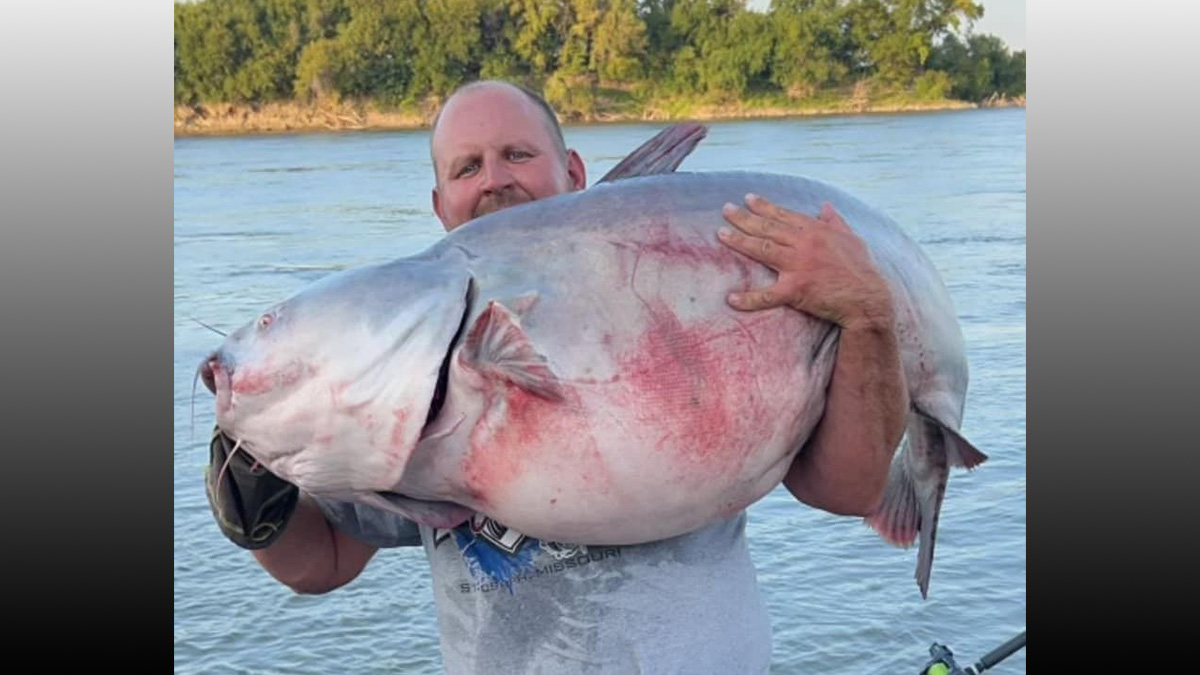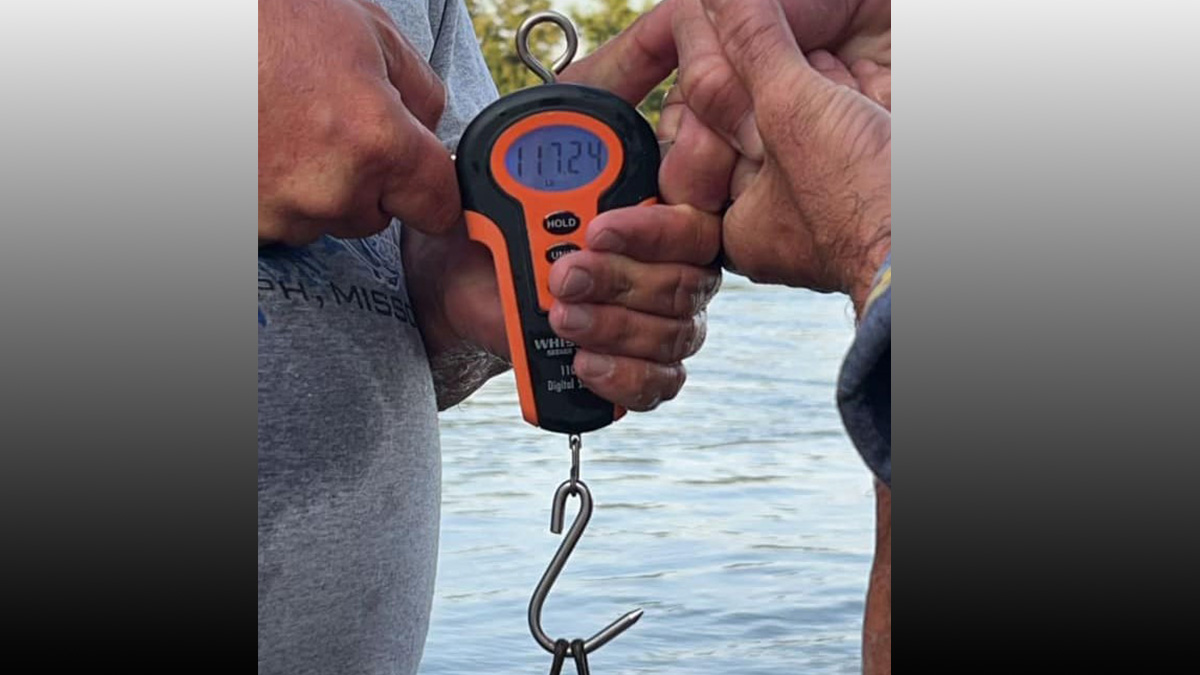hKyle Koehler will remember 2024 as the year the big one got away. We’re not talking about a giant fish. He reeled that one in. But an almost-certain Kansas state record slipped away.
While fishing alone in northeast Kansas near the Missouri state line, Koehler landed the fish of a lifetime — a huge blue catfish. He fired up his boat and returned to shore and had friends help him weigh it. Two times, the reading on a Whisker Seeker scale came in at 117 pounds. That was far bigger than the existing Kansas state record of 102.8 pounds, also caught in the Missouri River, in 2012.
Here’s where things get interesting. Koehler tried to contact Kansas Department of Wildlife and Parks fisheries officials to verify his catch and witness it being weighed on certified scales, but was unsuccessful. So Koehler made the tough call and decided to release the big blue cat. No state record…but a whole lot of satisfaction.
“I didn’t want to kill that fish,” said Koehler, a longtime catfish angler who lives in Highland, Kansas. “It had lived that long. I didn’t want to kill it just so that I could have a plaque or a certificate.
STRONG CATCH AND RELEASE ETHIC
“I strongly believe in catch and release. I release all the big ones I catch.”
Included was a 94-pound blue cat he caught last summer on the river. No fish fries for this guy. Not with filets from big fish, anyway.
“The Missouri River still has a lot of big blues in it,” Koehler tells Wired2fish. “But we have a lot more people fishing the river, and they’re getting better at catching them. If we don’t take care of the resource, it’s going to affect the future of blue cat populations for the next generation.”
That catch-and-release ethic was drilled into him by his uncle and his father. Koehler started tagging along with them to the Missouri River when he was 7. He remembers watching them catch some huge catfish. Some of them were weighed, some were just photographed. But there was one constant—they always went back.
Koehler’s uncle, Roger Whetstone, ran a catfish tournament circuit called the PBBS Flathead Club. Wondering what the acronym stood for? Pole Bending String Stretching.
Fishermen weighed in big flathead catfish, but probably more blue catfish. They were handled as carefully as possible, then released after weigh-ins. Koehler and his wife took over the reins of the tournament circuit about 12 years ago when Whetstone was looking to retire. They’ve been at it ever since. Koehler still fishes with his dad and uncle and credits them for becoming the catfish angler he is today.
“They taught me about what to use for bait, how to read a graph, what to look for, how to anchor on ledges, how to run the river, a lot of things,” Koehler said.
TIME-HONED TECHNIQUE
He put that education to good use. On August 17 e got off work, then rushed to get on the river on the Kansas side north of St. Joseph, Missouri. He started by using a cast net to get his bait — Asian carp. He filleted one of the invasive species, then began to use his electronics to hunt for big fish. On a bend in the river, he spotted several big marks so he used his trolling motor to start bumping.
“When you’re bumping, you use the trolling motor to go about half the speed of the current,” he said. “You head up river, and bump your bait off the bottom behind the boat.”
Koehler was especially excited about using a new catfish rod designed for bumping, a John Jamison/Tom Knox Gen 2 Baitwalker Rod made by Mainlake Rod Works and Craig Barulich.
“The rod was known for being very light, yet strong,” Koehler. “It’s the best catfish rod I’ve ever had.”
Only 15 minutes after he started fishing, the huge catfish slammed the bait and laid the rod over. Line screamed from the reel, and the fight was on. Koehler and the fish played tug-of-war for about 15 minutes, each gaining a temporary advantage, then yielding again. Finally, the fish splashed to the surface, and Koehler was in awe.
“I caught that 94-pounder last year, and I knew this fish was bigger than that one,” he said. “I just kept thinking, ‘Please don’t get away.’ “
Koehler finally was able to guide the giant into his oversized net, but then he confronted another challenge.
GET BY WITH A LITTLE HELP FROM HIS FRIENDS
“I am a big guy, but I tried a couple times to lift the net and I couldn’t,” he said. “Finally, I walked it around to the back of the boat and was able to slide it over the side.”
Meanwhile, he called a couple of friends on his way back to the ramp to get help weighing the fish. They helped him lift the giant and release it back to the river once pictures were taken.
A lucky catch? Hardly. The stretch of Missouri River that flows along the Kansas-Missouri state line is known for its bragging-size blue catfish. It has the current, abundance of forage, structure and shallow spawning areas that blues prefer. Tournaments on both sides of that line produce some eye-opening weights.
Fall is the time to catch those giants, Koehler said.
“I like to fish from the middle of August to the end of October,” Koehler said. “The big blues really feed before they head for their wintering holes. That’s a time when you always have a chance of catching a giant.”













